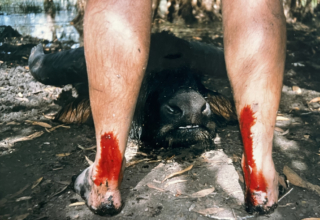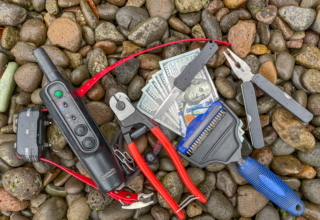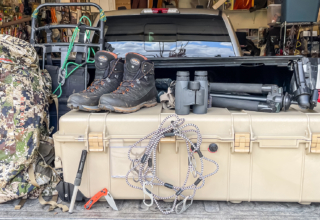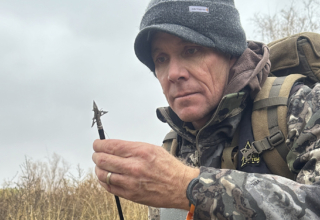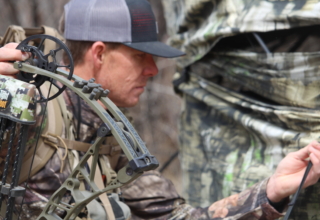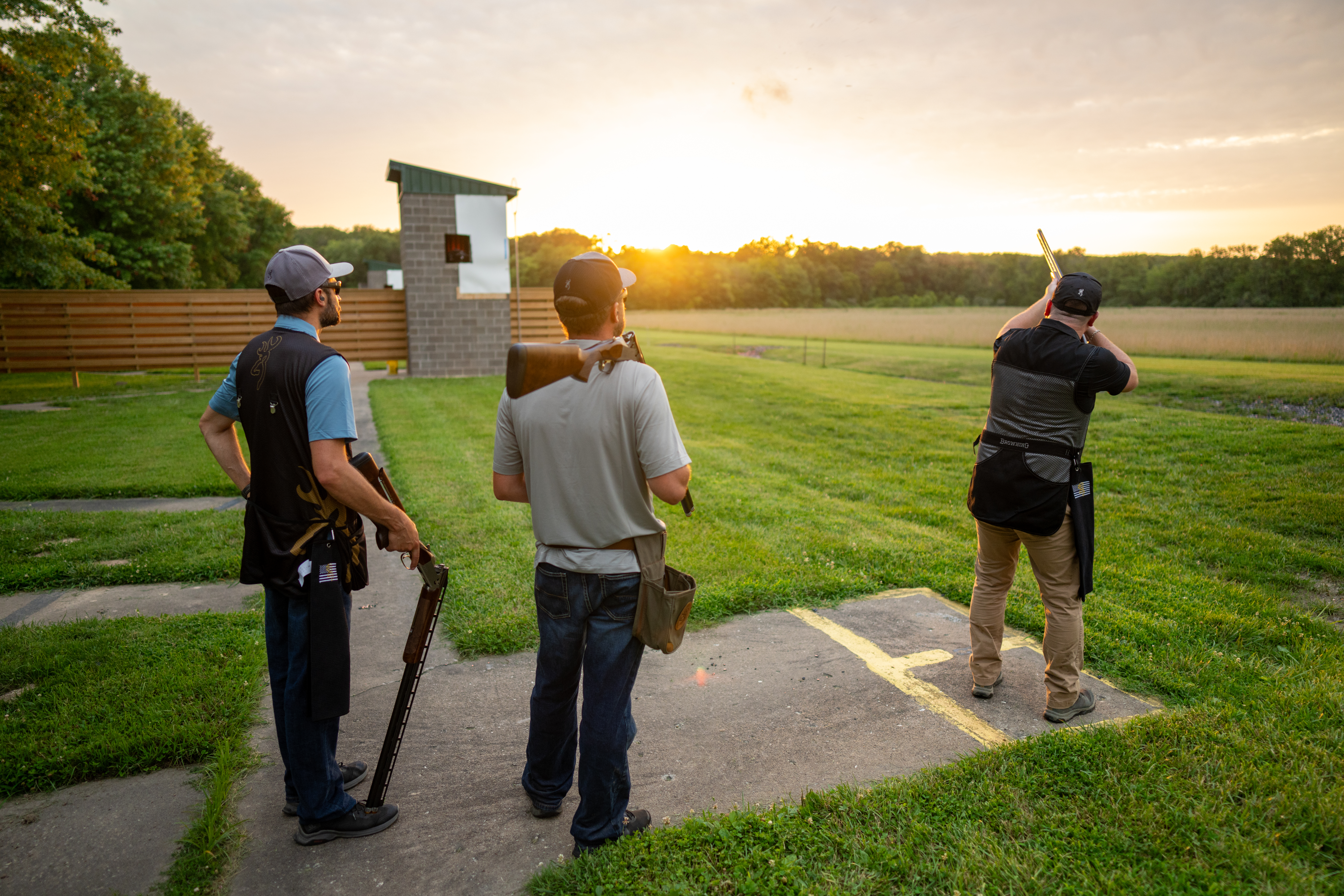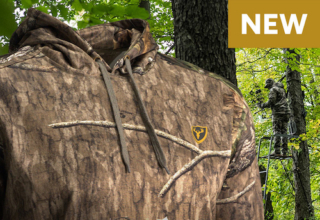Normally, articles start with the words of the writer. This one is different. I want you to know about Scott Haugen, and you need to read this article. Scott Haugen is a legend, and one of the greatest hunters ever. He has tracked and killed man-eating polar bears, been held at gun point by the cartel, and much more. Haugen is an adventure hunter. It’s a honor to call him a friend. His words and television series spurred me on and caused me to dream as a young man. This is not your traditional Born Hunting article, and I like that. Enjoy!
by Scott Haugen
Picking the largest of eight rams, the Winchester .30-06 roared. The bullet kicked up snow just under the ram’s chest. Before I could get another shot, the band vanished into the rugged mountain above.
Frustrated, I sat in the snow. The only sound was a gyrfalcon’s stiff wings slicing through the crisp Arctic air in pursuit of the willow ptarmigan I’d spooked.
But as suddenly as it ended, a second chance unfolded.
From a narrow crag emerged a ram running full speed. It disappeared into a swale. Anticipating where it would pop out, I scrambled 20 yards to the right. Just as I reached a rock to steady the rifle, a cloud of powder precipitated as the ram plowed through chest-deep snow. Then it headed straight up a hillside. At 125 yards, it was in the open. Putting the crosshairs on its spine, the ram buckled at the shot. I’d just taken my first Dall sheep.
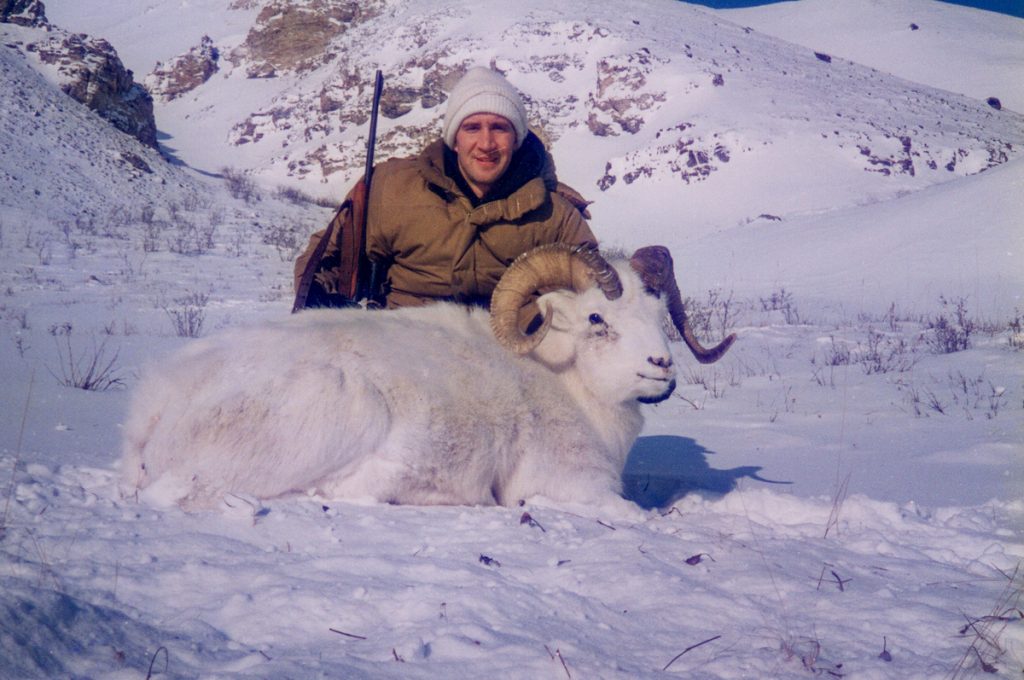
The Setting
It was March 1994, and I was hunting 15 miles from my home in Alaska’s Brooks Range. As school teachers then, my wife and I were living in the small Inupiat village of Anaktuvuk Pass, one of the last Native American settlements to become established in North America.
Nestled into the northernmost reaches of the mountains, 69 degrees above the equator, subsistence hunting and fishing were how we got our meat. Dall sheep could be hunted from August into April, which made them a prime choice for freezer filling.
Accessible only by bush plane, the village was powered by diesel generators. There were no roads in or out. The internet had only recently become accessible. We had no flush toilets, and 24 hours of darkness consumed the land for two months in winter. We did nine months’ worth of grocery shopping at once in Fairbanks.
Living in the remote bush village, we qualified for a subsistence lifestyle like indigenous residents. Grizzly, caribou, and moose could all be hunted under subsistence laws, and I did pursue them, but the white sheep intrigued me the most. I could take four Dall sheep a year, one on a sport hunting license and three on a subsistence permit.
Laying eyes on 150 Dall sheep a day was common. Watching more than a dozen full-curl rams, as did the frustrations of having no way to access them, became normal. This far north, the Brooks Range is extremely rugged and unforgiving. Wading through snow chutes with steep overhangs where the slightest noise could trigger an avalanche kept me from stalking many large rams. It’s a dangerous country, and one mistake can kill you.
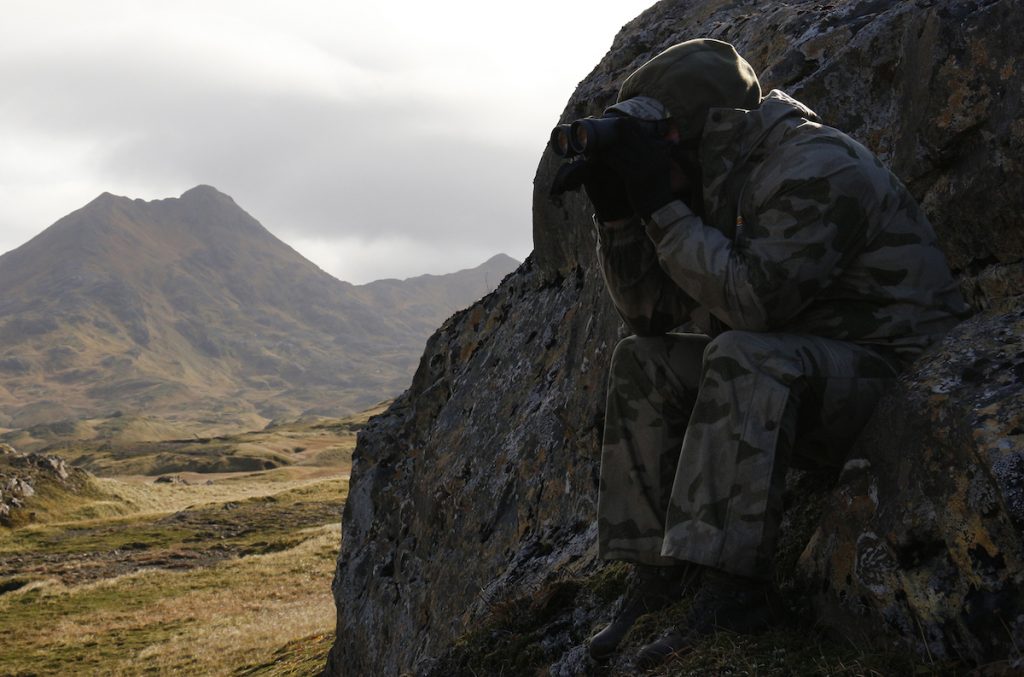
Approaching the ram, I was struck by its six-inch long, white coat. Few hunters ever get to see a Dall sheep in full winter pelage. Pulling the bulky head from the snow, I was elated. Though it was likely the most miniature full-curl ram of the bunch — three in the group pushed the 40-inch mark, including the one I missed — it didn’t matter. I had my first ram and fresh, much-needed meat.
Dall Double
The following fall, when sheep meat is at its finest, I headed out with hopes of stocking the freezer for winter. I was with my Inupiat hunting and trapping partner, the late Ben Hopson, in early September. We were looking for Dall sheep, grizzly, moose, and caribou, emphasizing Dall’s. After traveling all day, we spotted three rams right before dark. Knowing a 2,000-foot vertical stalk was impossible in the waning daylight, we pitched a tent in the river bottom.
The cry of wolves serenaded us through the night, and I awakened the following day, relieved to see the sheep where we’d last seen them. Twisting in my sleeping bag, I unzipped the tent and set up a spotting scope. When one of the tripod legs wouldn’t level, I discovered it was in a large grizzly bear track pressed deeply into the soft sand, inches from our tent. Neither Ben nor I heard the bear in the night, despite the bruin circling it more than once.
All three were mature rams. We wasted no time starting the arduous climb. Four hours later, we reached where we’d last seen the rams. They weren’t there. During our hike we’d lost sight of them.
We crept forward, looked, glassed, and saw nothing. “Either they have gone over the top, or they’re right here,” whispered Ben as he motioned over the knoll we laid on.
When we inched forward, my pulse raced when I glimpsed the rams, head down, feeding 25 yards from us. Singling out a member of the trio, Ben tried for a headshot to avoid damaging meat. The moment Ben pulled the trigger, the animal twitched its head, and he missed.
The rams were off and running, and I managed to squeeze the trigger when the crosshairs of my scope passed behind the shoulder of the trailing ram. The full-curl Dall folded, toppling down a shale cliff out of sight. The two other rams disappeared.
Nearly a minute later, the pair revealed themselves 300 yards away, opposite the ravine from where we stood. The lead ram broke the crest of the 3,700-foot mountain without looking back. Its counterpart paused momentarily, perched atop a 75-yard sheer granite face. Ben shot, missed, then told me to shoot.
The shot echoed through the rocky cliffs, and the ram collapsed, turning two-and-a-half flips as it free-fell through mid-air, almost in slow motion, before crashing to the scree slope and sliding another 150 yards out of sight below us. Hurrying to the cliff’s edge, we could see both rams had come to rest 200 yards below, 10 feet from one another.
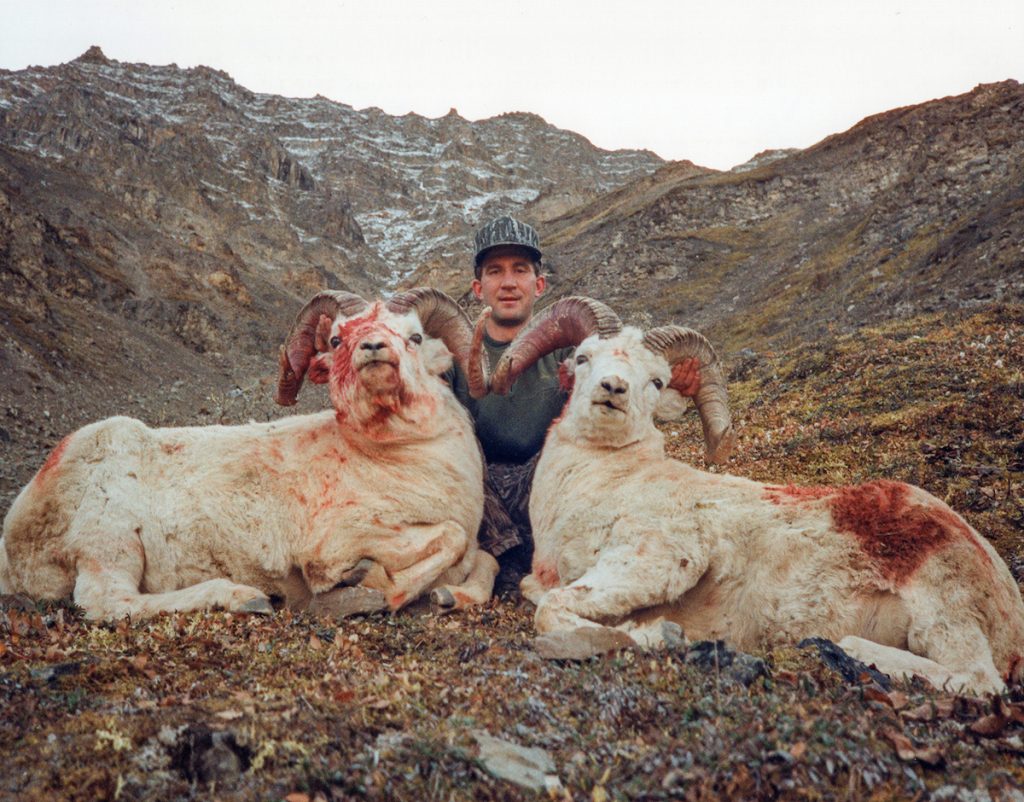
Here, a subsistence hunter could take four Dall sheep a year, one on a sport license, and three on a subsistence permit. Descending the canyon wall, we made our way to the sheep. Both were bloodied from the fall.
It was a routine day for Ben, who had been subsistence hunting his whole life in this land. For me, it was one of the most memorable hunts of my life.
The Pinnacle Ram
The following spring, our meat supply was low. I glassed over 160 sheep one day in early March. Eleven were full-curl or better rams. The big rams were inaccessible atop the snow-covered, icy mountains, so I headed home. Exiting the valley, I stopped one last time to take in the captivating sunset amid the towering, snow-covered peaks of the Brooks Range.
Staring in admiration at the surrounding beauty, a lone ram materialized from the cliffs. Standing 300 yards above me, I watched as it kicked the snow off the rocks, then licked lichens. I stared at the magnificent ram for nearly 30 minutes as it fed, its white coat and golden eyes glowing in the sun, which still shined up high.
Hunting is impossible during December and January this far north of the Arctic Circle. As the sun starts popping above the horizon in February, temperatures still make traveling any great distance on a hunt dangerous. It was 21 degrees below zero on this day, and given the no wind, the conditions were perfect for securing this giant ram.
Settling the crosshairs on the thick-coated Dall, it fell at the shot. Watching through binoculars, the massive ram sprung to its feet. Another 180-grain hand-load from the ’06 found the mark, sending the ram plunging down a snow chute and sliding within 100 yards of where I stood. Climbing through waist-deep snow, I was hot and sweating when I reached the ram.
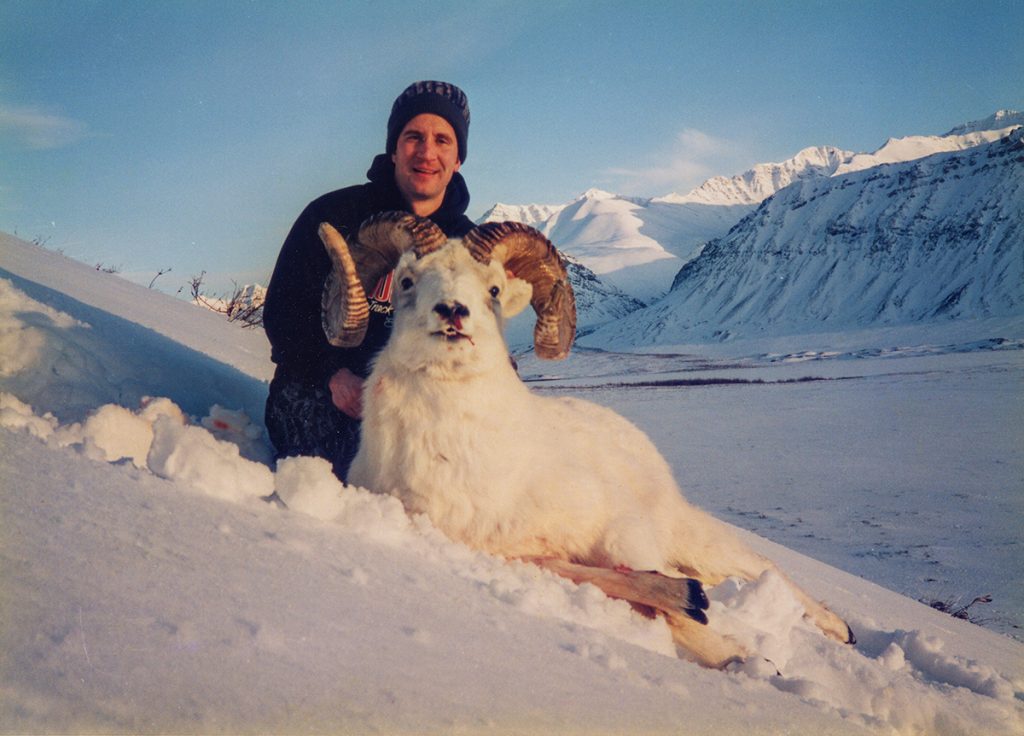
Wrapping my hands around the 13-inch bases, I lifted its head to find 37 inches of beaten, broomed, curling horns. At least 5 inches had been worn off the lamb tip of the most extended horn — more than that on the shorter horn — which made it an exceptional ram for the north slope of the Brooks Range.
I counted rings on the heavy horns. It was eleven years old. Mixed emotions stirred. It was the first time I’d experienced such feelings on a hunt.
The grand Dall eclipsed any animal I had taken in my life then, not because of its size but because it so vividly epitomized subsistence hunting in this remote land. It was an animal that connected me with my place and the culture of the Inupiat subsistence hunters I had come to know and appreciate.
It was then and there that my life as a hunter experienced a shift from what I’d grown up with as a sport hunter to what it now consisted of in the form of modern-day subsistence hunting.
Standing over the ram, I gazed across the Anaqtiqtuaq Valley and saw where I had taken other Dall sheep, moose, caribou, and grizzly bear. I could see where my trapline for wolf and wolverine extended. I could see the village we called home through my binoculars on the valley floor far below.

In the world of subsistence hunting, there are no guides to turn to, no one to help in 40-below-zero temperatures, and no one to depend on for navigation and survival. Here, you must be self-sufficient, no matter the situation or the extremes.
In a place where the cold can be a killer, and the unforgiving land, your worst nightmare, self-sufficiency is vital. I never felt so close to nature as when subsistence hunting for Dall sheep in Alaska’s Arctic. Learning from the Inupiat men how to hunt the animals their people had relied on for countless generations catapulted me back in time. It took my hunting skills to another level.
Living among and hunting with the indigenous people of Alaska’s Arctic was extraordinary. Words can’t do justice to the experience I was so fortunate to have for seven years. It was hunting unlike I had ever known, before or since.


